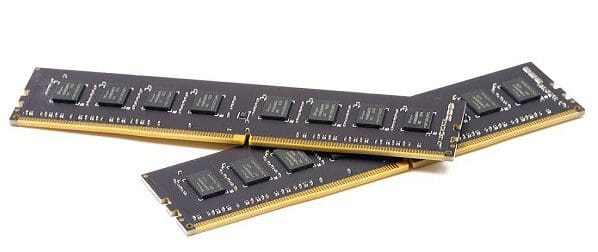Modern computers are tightly run ships.
The most tightly controlled piece of hardware in a computer, though, is the RAM.
While these timings define the performance of RAM, they dont control how it works, just how quickly.

One of the critical parts of using RAM is RAS.
RAS is short for Row Access Strobe or Row Access Select.
In the days of Asynchronous DRAM, RAS was a strobe.
RAS is an electrical connection between the memory controller and the RAM chips.
It is left high by default.
When RAS is brought low, this indicates that the address on the address pins is a row address.
The RAM then starts the process of opening the defined row.
RAS must then stay low until the row can be closed.
This is after data appears on the data pins.
Contents
Timings Related to RAS
There are many timings related to RAS.
The most basic is tRASwhich defines the minimum number of memory clock cycles that RAS must be held low.
This is typically the fourth number if a set of RAM timings are presented without labels.
tRCDis another timing that defines the RAS to CAS delay.
tRCis the Row cycle time.
That is the minimum number of memory clock cycles between one row being opened and another row being opened.
What Functions Are RAS Used For?
RAS is used for every RAM operation.
A row and column address must be specified to read any data from RAM.
This process is the same for writing operations.
The memory cells that make up RAM need to refresh their charge as it leaks away regularly.
This is called refreshing.
A refresh cycle is run to ensure that every cell is refreshed before any data loss.
Entire rows of cells are refreshed at once by opening and closing them again.
The read or write operation, therefore, refreshes a row meaning it can be skipped for that cycle.
A Refreshing Approach
There are two main approaches to performing a refresh; both require using RAS.
The first is RAS Only Refresh or ROR.
This involves pulling RAS low and specifying the row to be refreshed.
The second approach is the CAS Before RAS refresh or CBR.
This pulls CAS low, then RAS low, but never specifies any address on the address pins.
Under normal operations, RAS must always be pulled low first, which is a distinct operation.
CBR has a slight power efficiency advantage over ROR as no power is needed to specify a row address.
Conclusion
RAS stands for Row Address Strobe.
It may also be called Row Address Select, as the electrical signal is no longer a strobe.
When RAS is brought low, a row address is picked up from the address pins.
This is used to open a row, which stays open as long as RAS is held low.
There is a minimum amount of time that RAS must be kept low, defined as tRAS.
There is also a minimum amount of time that RAS must be held high afterward, tRP.
Combined, these two timings make up the RAS Cycle time, tRC.